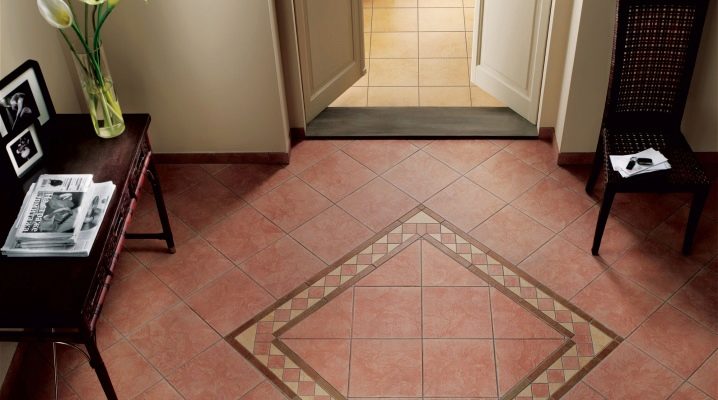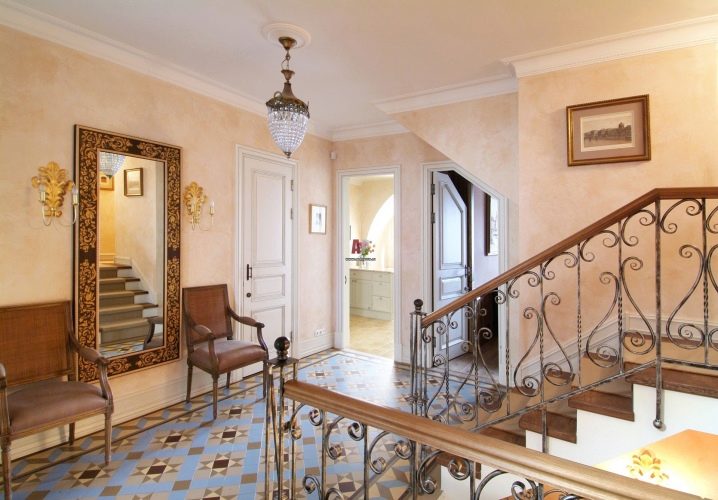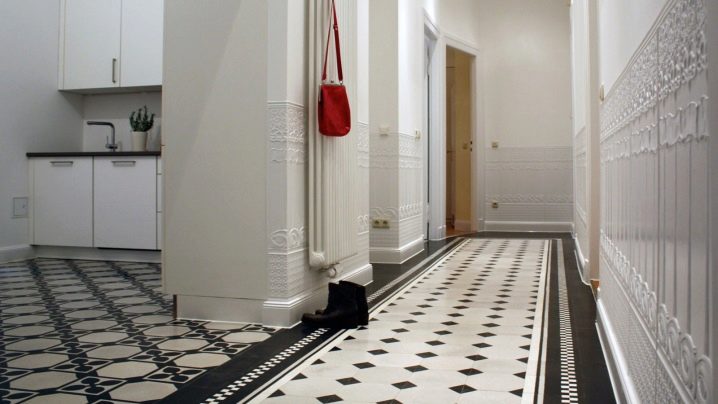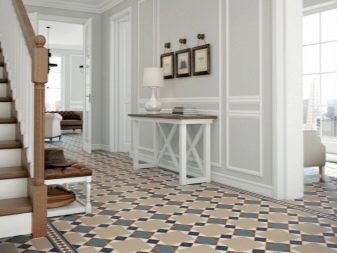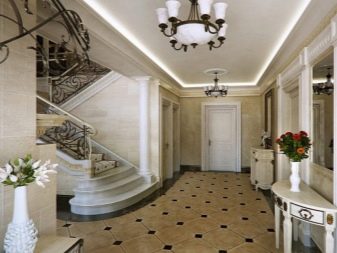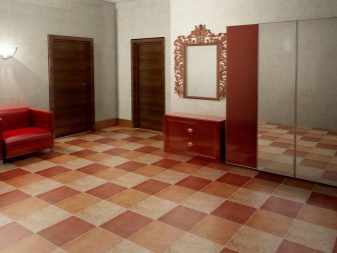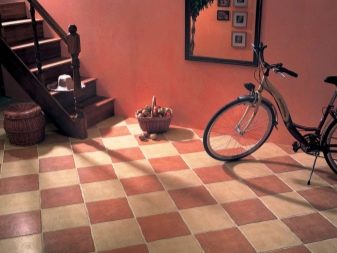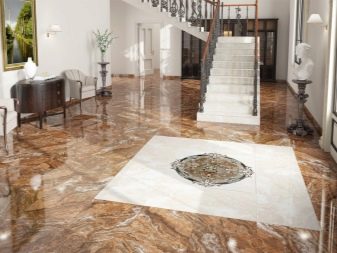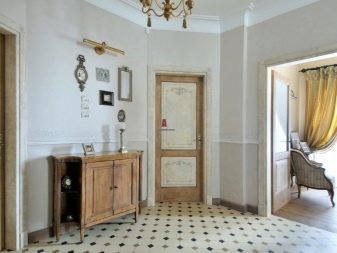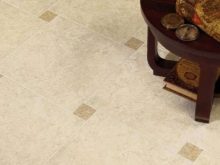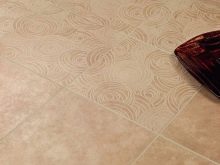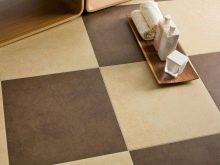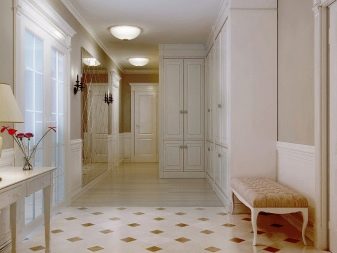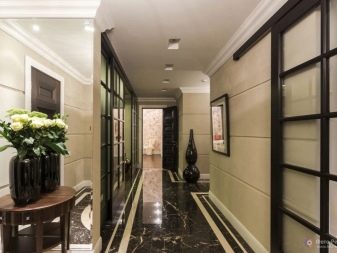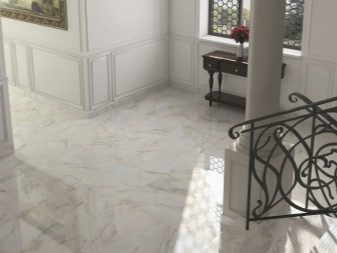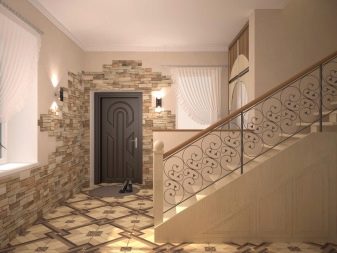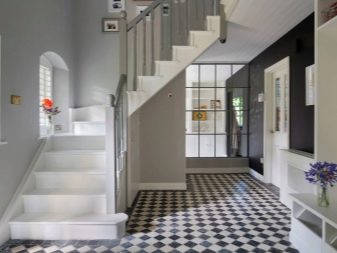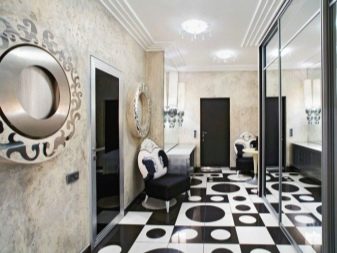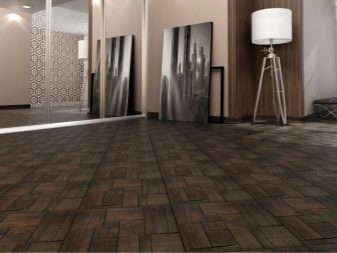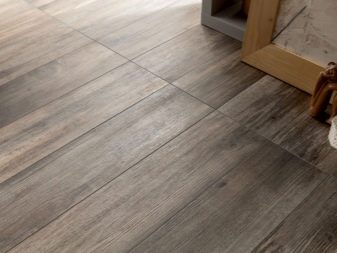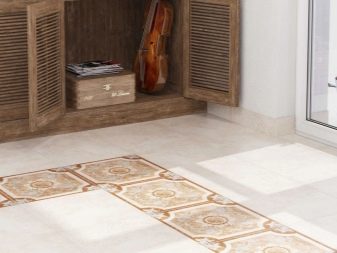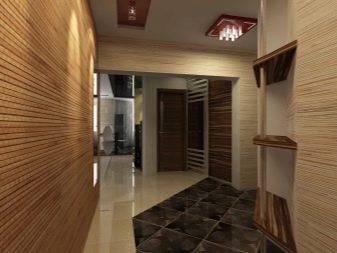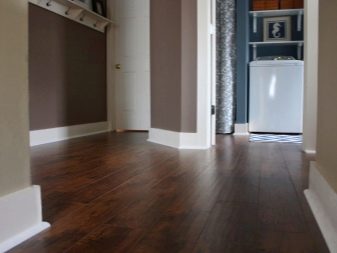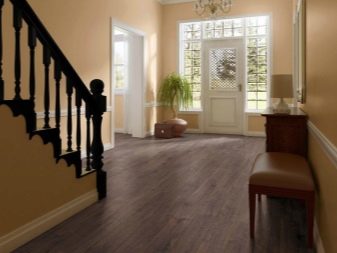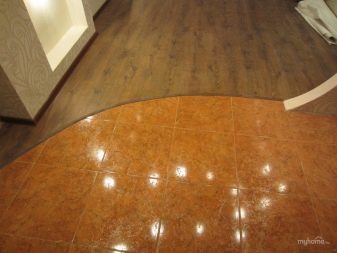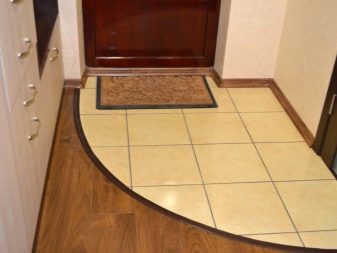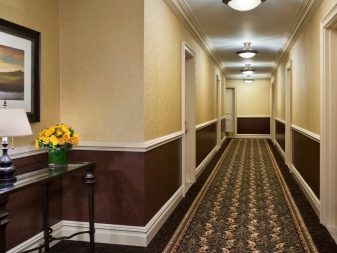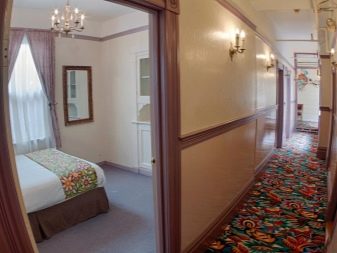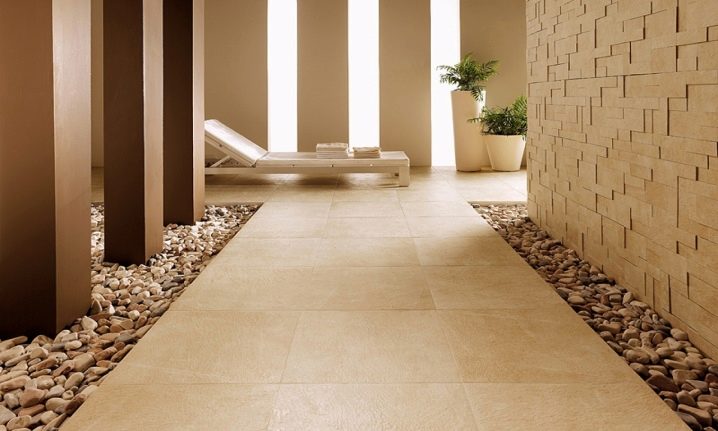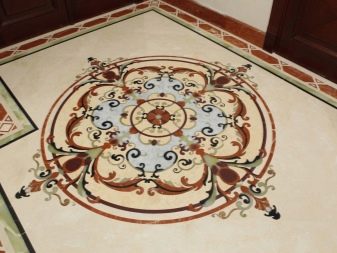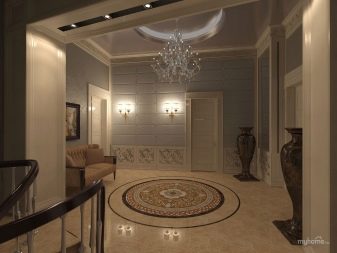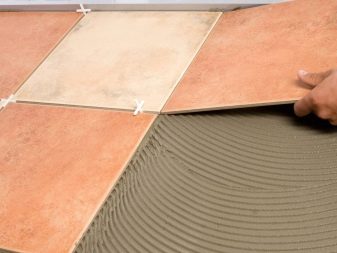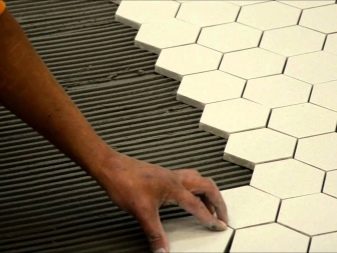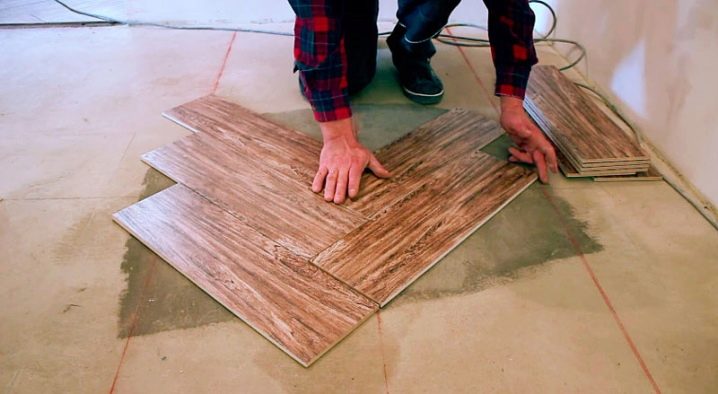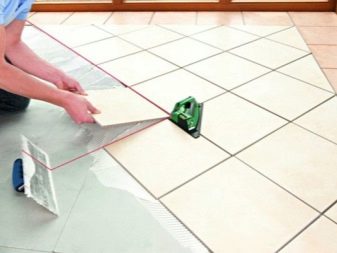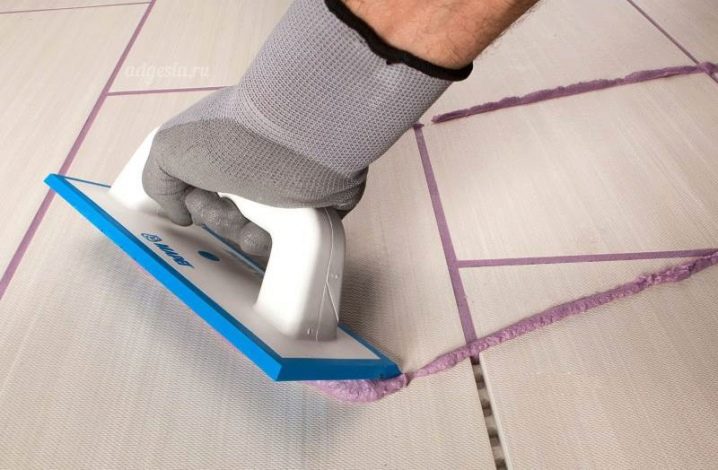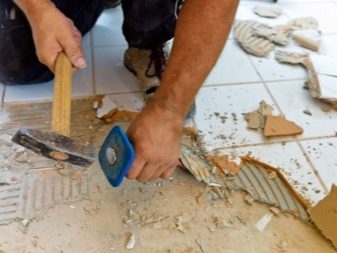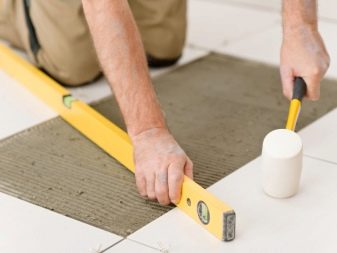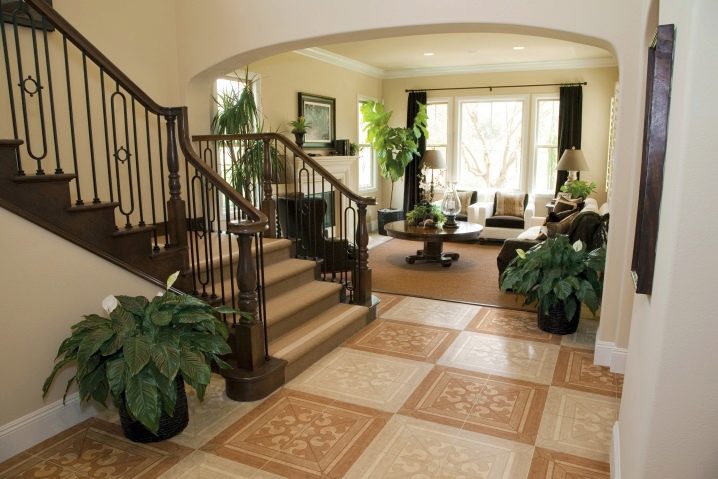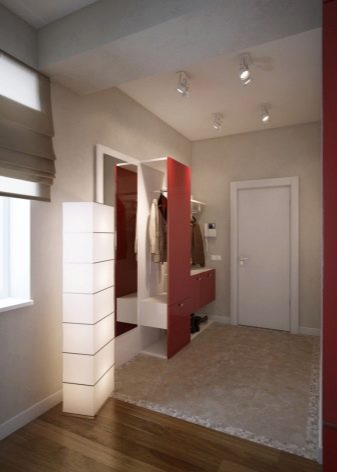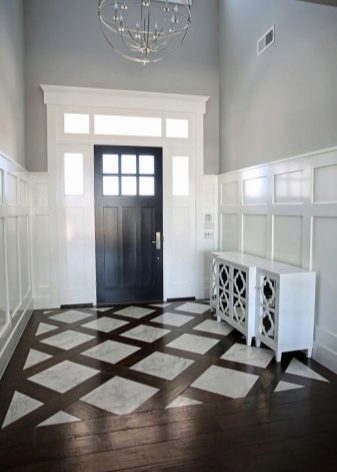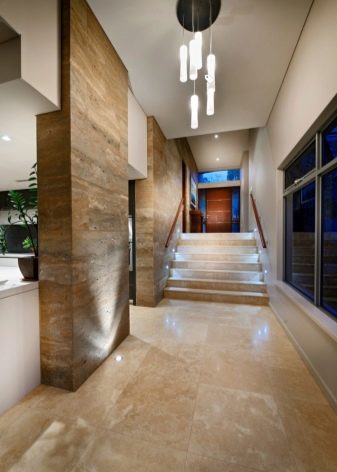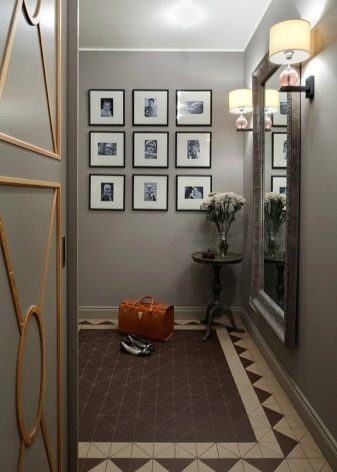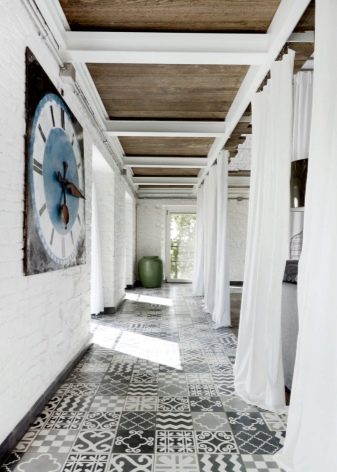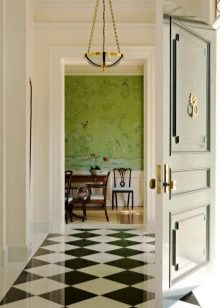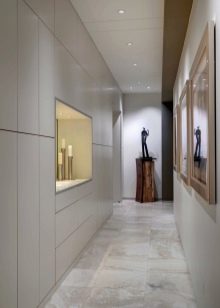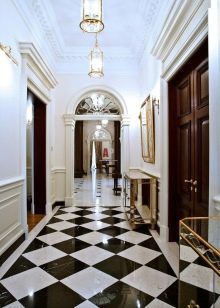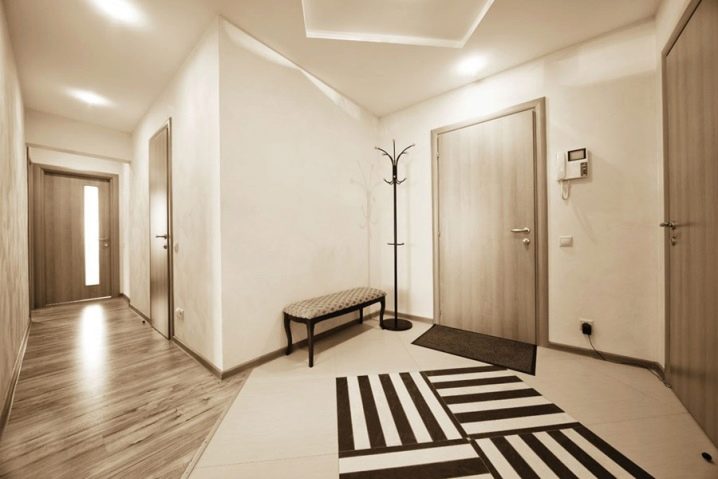Choosing tiles on the floor in the corridor
When we choose tiles on the floor, we try to focus not only on the aesthetic characteristics, but also on the technical parameters of the product. The competent choice of finishing materials will help to keep attractiveness of a hall for many years.
Special features
It is best to choose materials in the corridor that are characterized by high strength, ease of maintenance and moisture resistance. Ceramic tiles are considered the most popular type of finish. It has excellent characteristics, attractive appearance and allows you to visually change the room due to the appearance of styling and a wide choice of colors.
A tiled entrance hall has the following advantages:
- tile has high strength;
- the material is well tolerated in contact with detergents, heels and other influences and loads;
- ease of care, the absence of mold and bacteria;
- such material is sufficiently resistant to moisture;
- long service life, which is at least 50 years;
- aesthetic characteristics;
- tile material is not prone to fire;
- environmental properties;
- convenience in restoration.
Despite the large number of positive properties, the tile has negative qualities.
The negative sides are as follows:
- The floor of the tile has a rather cold and hard surface. Walking barefoot on it is undesirable and uncomfortable;
- Choosing the type of tile, you should take into account the differences in slip performance. Glazed surface is too slippery. For the floor, choose a matte and rough type of material;
- Light colored products with deep grooves are prone to rapid contamination and accumulation of dust.
Kinds
Tiles can be produced in different colors, decorated with inserts and even patterns.There is decorative ceramics, on which there are skirting and curbs. The difference may lie in the surface of products. It can be smooth or embossed.
Good reviews received gres tiles, which has great features and versatility.
Such products are actively used not only for the corridor, but also for the design of different interiors and exteriors.
Dimensions
There are standard flooring sizes.
They may have the following parameters:
- 30x30 cm;
- 20x30 / 25/20 cm;
- 10x15 / 10 cm
In addition to traditional sizes, there is a tile with larger parameters: 40x40 cm, 60 × 100 cm, 70x120 cm.
Widely used tile, which has the shape of a square or rectangle. In this case, the proportions of the sides do not matter and can have any value. In some stores you can find oblong "sticks".
Materials
It should be noted several types of tiles from different materials that are most common in the modern construction market:
- Ceramic. It is based on burnt clay. Such raw materials are famous for their durability, color retention and excellent transfer of individual components of the decor. Among the disadvantages is the fact that the tile has a cold surface and brittleness;
- Mirror. It helps to visually increase the area of the corridor. There is a tile with a matte or tinted edge. Some buyers choose an imitation of expensive metal, products with sandblasting. To enhance the aesthetic quality of the finish, you can use the built-in lighting to illuminate the floors;
- Marble The surface of the floor is considered to be an indicator of luxury and refined taste of home owners. The floor surface made of natural semi-precious stones is able to emphasize the status of its owners. High performance characteristics, along with decorative qualities, support the relevance of using marble tiles in the corridor of a city apartment and country houses;
- Gypsum tiles are suitable only for finishing work on certain sections of the floor. It is relevant for areas between the walls and the floor, as well as a decorative edging. For a complete laying of floors such material is not suitable because of its low strength.
Colors
When choosing a tile for the floor in the hallway, consider the fact that too light and dark surface emphasizes all the dirt.In order not to engage in cleaning floors every day, stop your choice on medium shades. Dirt is not so striking if the surface of products is equipped with an image and relief.
Black and white colors will help you achieve showiness. Black tones have always been associated with a sense of chic, rigor.
The most popular chess combination with the ornament, due to which you get a beautiful surface.
Products under a stone are often used in the corridors issued in classical or country style.
The tile can imitate natural stones: granite, marble, onyx, slate and agate. Different shades, streaks and blotches are peculiar to such material.
Special wood-tile is capable of repeating oak, lime, pine pattern. Many buyers prefer aged tile types, with traces of scuffs and scratches. Also popular products that match in shape and size with a solid board or parquet plank. Manufacturers offer a wide selection of designs, among which there is an option for each interior.
Brick floor tiles exist in a variety of options.It is popular due to the wide choice of textures, decor and material of manufacture. The area of use of such tiles is quite wide.
In various styles
Thinking through the design of the floor in the hallway, you should start by choosing the color. You will need to decide whether the floor of a light or dark tone will be in the corridor.
Recently, light floor is in demand. It is suitable for a variety of trendy interiors, in which apartments and country houses are made.
The combination of bright floor tiles with Scandinavian style, minimalism, Provence or Loft speaks of the good taste of the owner of the room and the original performance of the interior itself.
The dark floor will go well not only in the classic interior, but also in other styles, which include Baroque, Rococo, Oriental, Japanese and Chinese styles.
Focusing should not only on the style of the room. Different colors of the surface contribute to the creation of different sensations. For example, light add to the interior lightness and airiness, along with the visual expansion of the boundaries of the room.
Light shades are ideal for small hallways.
What is better to choose?
If you only live in the apartment or your family does not have children and animals that often run and jump along the corridor, you can choose a surface for the floor with less durable characteristics.
Many people prefer to use laminate flooring. The stores have a wide selection of this material, among which you can choose not only a suitable shade, but also an option that imitates valuable types of wood. This surface has good aesthetic, performance properties.
Also laminate is famous for its long service life and resistance to mechanical loads.
Not all types of laminate are suitable for the corridor. For this room, you need to purchase a grade of class 31-33, as it has a high level of wear resistance.
Wood products of natural varieties in the corridor are rather a decorative element, rather than a functional one. An entrance hall is a room in which practical, moisture-proof and resistant to mechanical stress materials should be used. Parquet is not able to boast of such qualities in full.
It should also be borne in mind that wood has a fairly high price tag.
Most designers advise their customers to use the combined version, where the flooring is combined with any wear-resistant material.
Some apartment owners decide to use carpet as floor covering in the hallway. The selection of such a surface should be based on the quality of the material. Carpet is made from threads of natural and synthetic origin.
For the corridor you should not use the natural version, because it is characterized by excessive softness and moisture absorption.
Synthetic carpet has an affordable price and good performance indicators:
- he is not crushed;
- easy to clean;
- due to the synthetic composition, insects and bacteria do not breed in it.
Cork coverings with linoleum are undesirable to use in the corridor, because such products do not have sufficient strength. It is best to use such material in living rooms.
The facing tile is ideal not only for a corridor, but also for the shower room. First of all, it is connected with its moisture resistance and resistance to the formation of mold and bacteria.To eliminate such a disadvantage as a cold surface, install a “warm floor” system.
In addition to the equipment of the floor, consider the ceiling of the room, which can also be made of tile.
Manufacturers also offer options for panels of floor tiles. This mosaic creates an original interior in any room and allows you to make the design of the room exclusive. In recent years, many buyers prefer mosaic coating and leave positive feedback on their purchase.
Choosing material for flooring, do not forget that to complete the picture you will need to purchase a plinth. The choice of this product depends on the type of floor you choose for your home.
Piling
Anyone can lay the tiles on the floor in the corridor with their own hands. The design component of this process consists of the styling itself and the work on the combination of colors and textures. You can ask the designer to help you in the choice of colors, or completely do all the work personally.
Specialists can create unique images from tiles. Mosaic is a popular product to create drawings and beautiful patterns.
The layout affects not only the appearance of the floor, but also the perception of the entire corridor, which is also important for creating the right atmosphere.
The diagonal layout is used in rooms with a small area. Such a picture can visually enlarge the room. The same effect gives a combined option, where tile material is combined with other finishing materials.
If you want to lay out the floor in an apartment with this solution, this will lead to a visual increase in the corridor due to the selection of zones.
Putting material is necessary in compliance with the following rules:
- Laying should be done exclusively on a flat floor;
- To make the work more comfortable, draw a pre-markup;
- apply glue only on the floor;
- all finishes must be matched to a level. The surface of the floor must be flat;
- grouting can only begin after the glue has completely dried;
- spread tile material should be using two methods: "seam in the seam," "in the run-up."
Before you begin the process of facing, you should carefully level the floor surface.To do this, you will need to dismantle the old coating, whether it is a wooden floor, linoleum or laminate. After the surface is cleared of debris and all irregularities are aligned, you can proceed to the screed. For this work, any specialized tool that is sold in hardware stores is suitable. After drying the screed, you can make markup.
To markup was correct, you should not focus on the walls of the corridor, because they can go along.
Experts recommend to draw two perpendicular lines and use them as a guide.
This option takes a lot of time because you will need to apply each tile separately. To reduce the amount of waste, you can put the product "dry" and analyze the resulting layout.
Tiled floor is laid out in the same way as the walls. In the role of the fastener, you can use any type of universal glue. Keep in mind that its layer must exceed the thickness used in the decoration of walls. Use a notched trowel to apply, and then press the tile to the floor.
If at the entrance there is a threshold from steps, it should be remembered that matte or ribbed products are suitable for this site.
The first option is better to use as a last resort, because with the wrong layout such material begins to be "capricious", and when contacting with heavy objects it forms chips.
Transition to laminate
Tile in the hallway is a suitable option if you use it in moderation. In the role of the main material of the floor is best to use laminate, parquet or linoleum. Together with them, floor tiles can be placed at the same level with the floor surface or slightly higher. It is not allowed that the height of such an overstatement is more than 3-5 cm, since the deviation from the norm will turn the hallway into a traumatic room.
If you plan to podium or elevation, pay attention to special solutions for screed or simple tile adhesive.
The shoe zone has a functional meaning. When you select it, you designate the area beyond which it is impossible to go in dirty shoes. As a rule, many people use tiles for this area, and the rest of the floor is covered with a laminate.
Two types of floor joints can be used: linear and figured.In the first case, the use of straight lines at the joints. To get curly borders you need cutting tiles, making calculations. However, additional costs will be offset by the result of your work.
Flexible sills for joints are sold in almost every building store. It is easier to work with joints of the direct type, especially since manufacturers offer a wide range of this material. You can buy the threshold of any color. This approach allows you to make the corridor harmonious and attractive.
Options in the interior
Most manufacturers of floor tiles offer their audiences ready-made projects that contain all the necessary components. With this collection, you can make a picture for the floor. Many people like the option in which a motley "carpet" with a fringing in the center is used. This design will be the centerpiece of the entire hallway.
Choosing a motley floor design, use plain finishing materials to work with the rest of the surfaces.
The patchwork technique is widespread, in which there is a square tile with a gray ornament, located in random order.The surface of the floor is similar to a patchwork quilt that uses the same colors with different image variations. This floor will be the accent of the corridor and will attract the attention of guests.
The famous "chessboard" looks spectacular in the hallway, increasing visually the volume of the room. This method of layout belongs to the category of original, but it is perfectly combined with any styles, ranging from classic to high-tech. When choosing such a tile, consider the need for neutrality of other surfaces.
To visually increase the space of a small hallway, you can use cool shades of gray, blue and brown.
You can also increase the width of the narrow corridor by laying in the junction of rooms in a two-room apartment with a floor of the same material. For example, use tiles on the threshold of the kitchen, bathroom and hall. This is a beautiful idea that not only has an aesthetic function, but will also perform the assigned effect.
Many apartment owners choose the combined option in which the tile is combined with other floor coverings. Ceramic tiles will be perfectly combined with laminate.This solution allows you to divide the corridor into zones, providing additional convenience and originality.
This video provides tips on how to choose the right tile for the floor.
